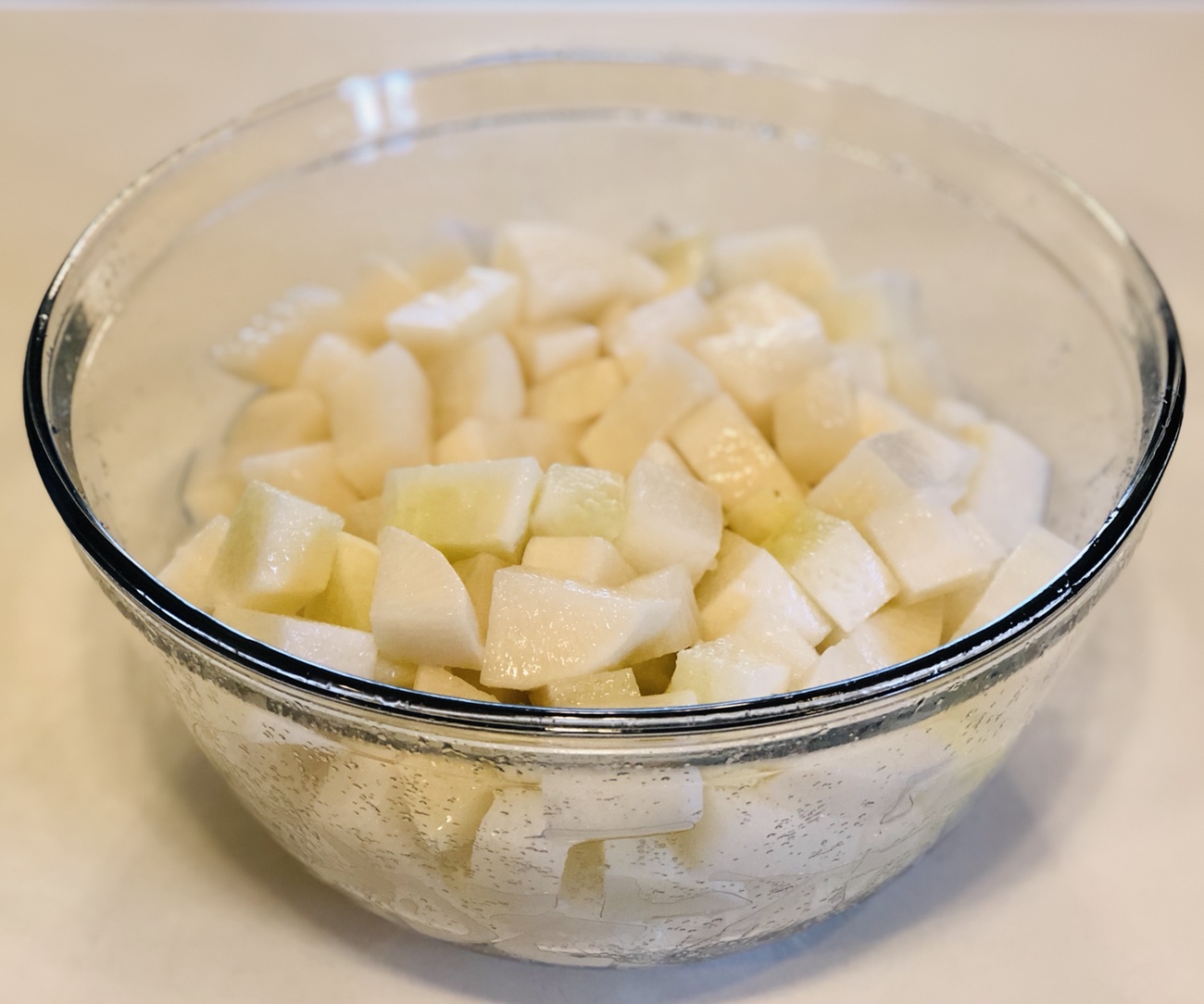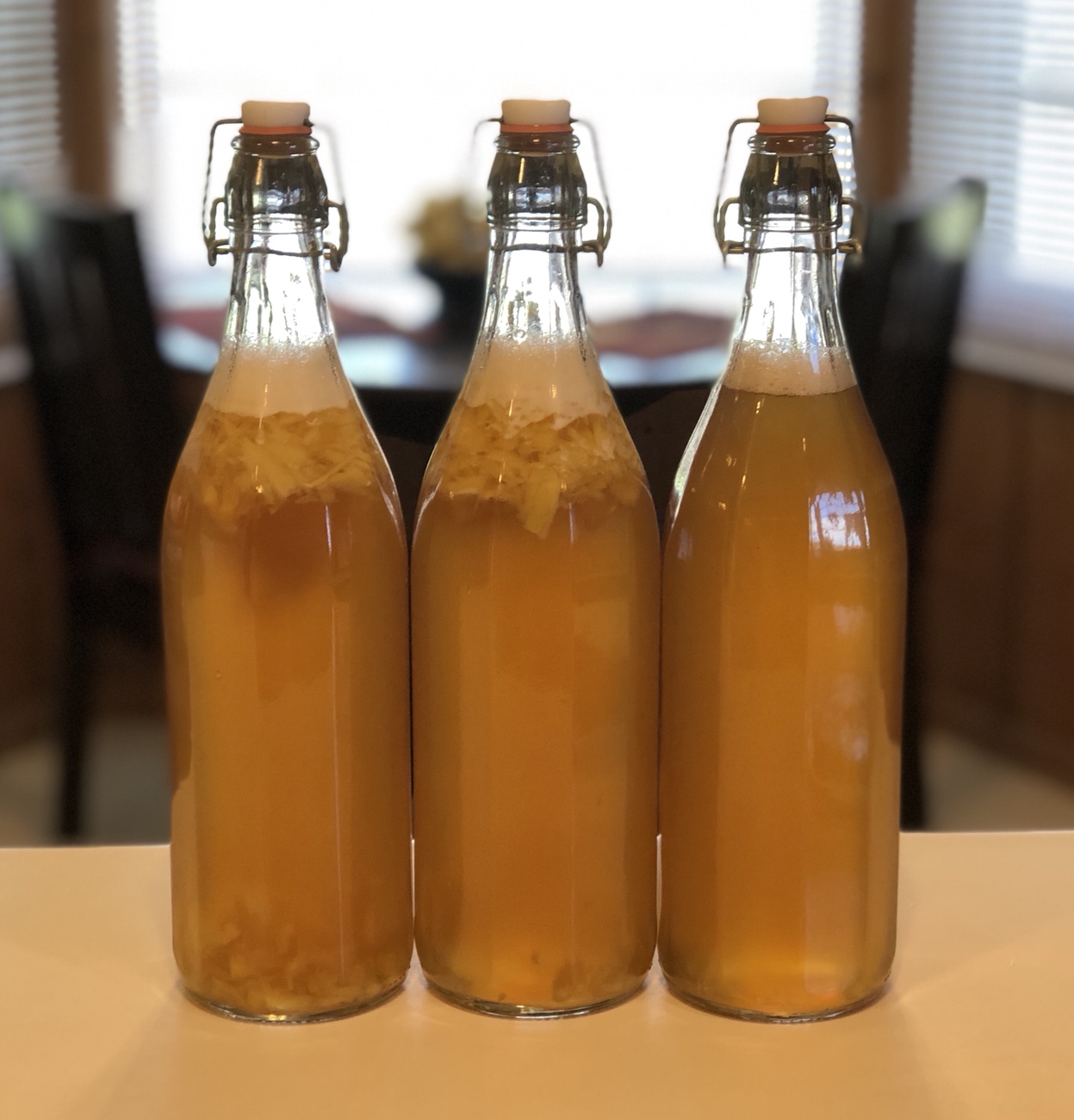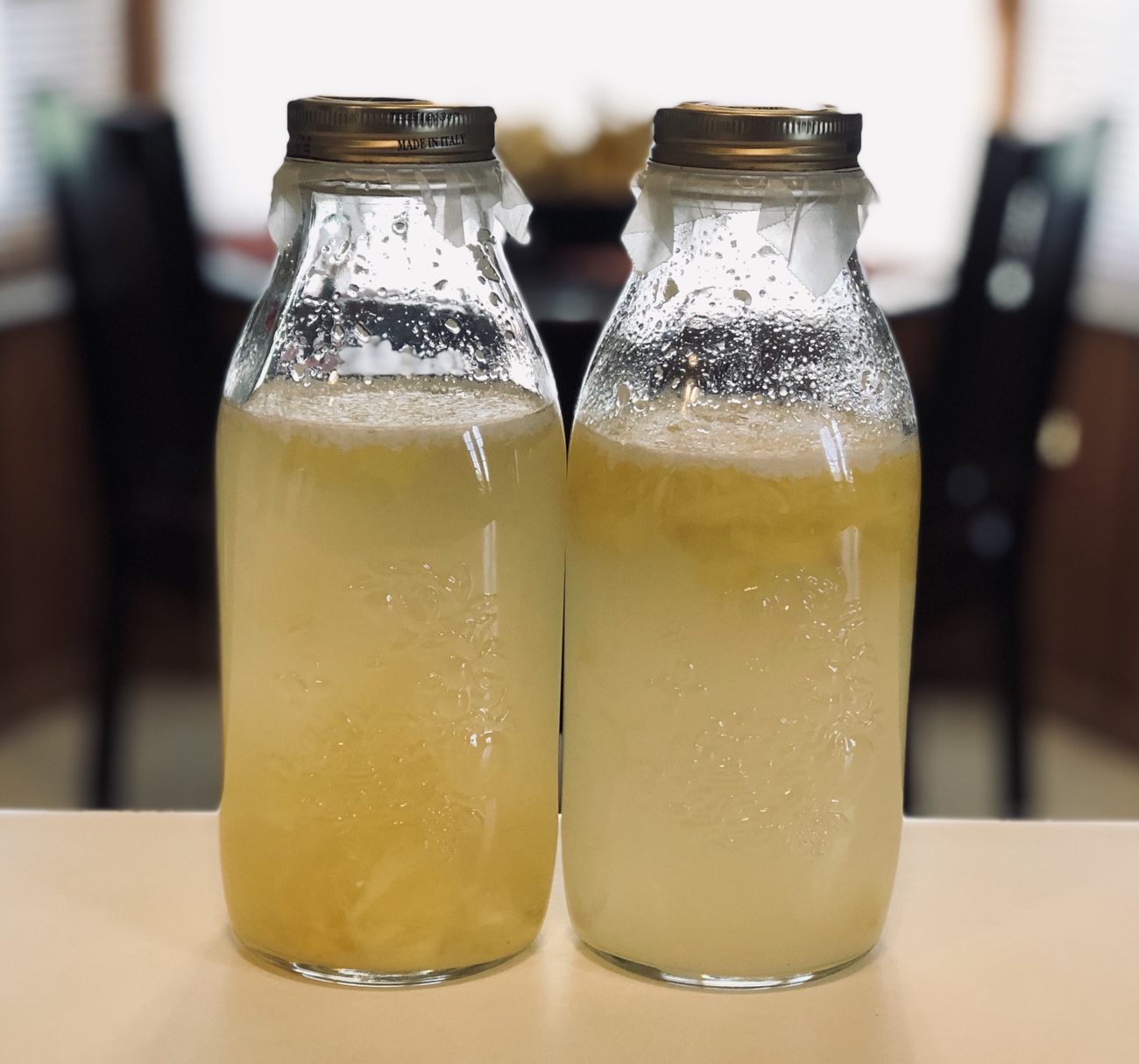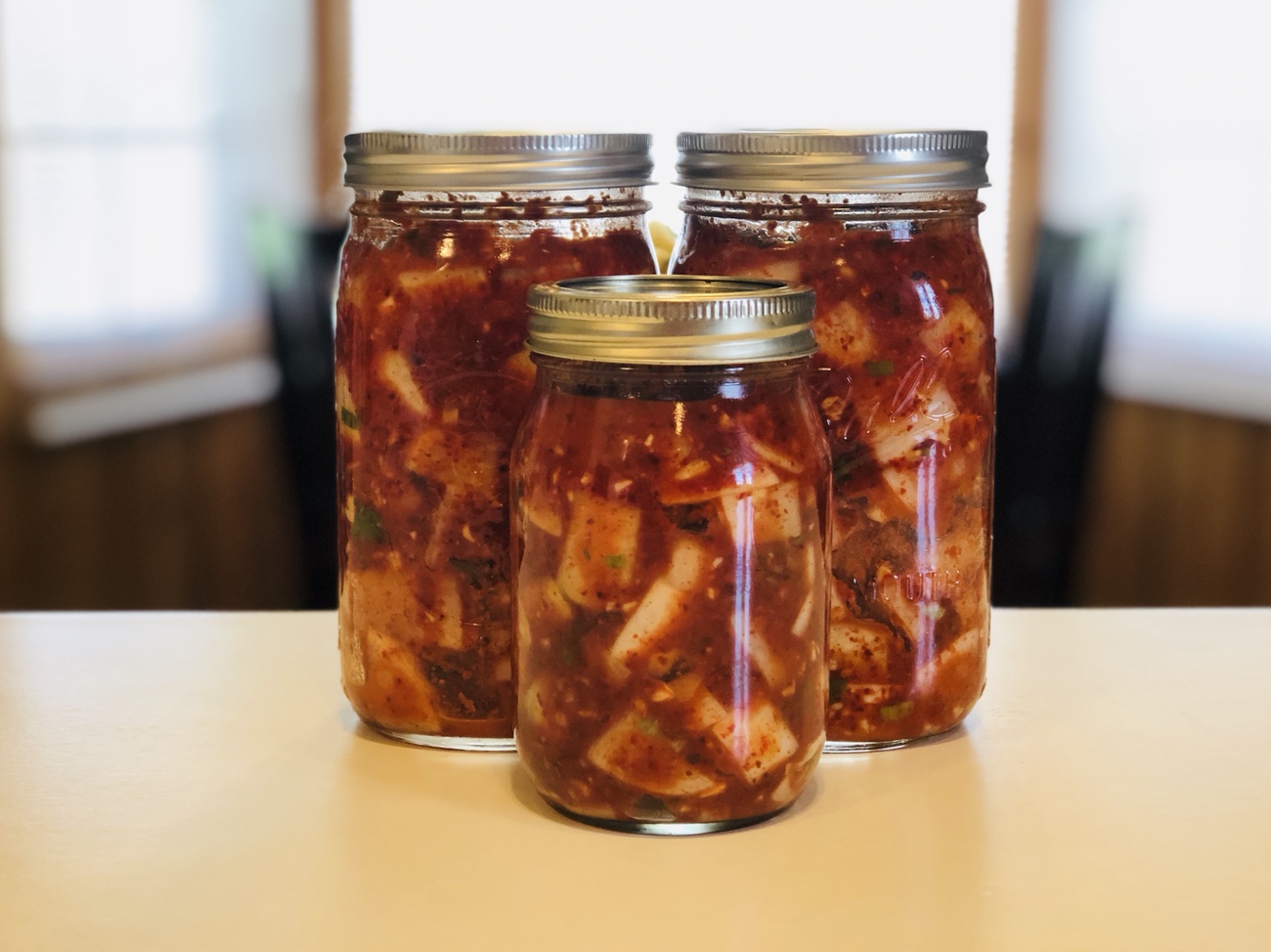
It’s been busy around here, but we always make time to keep our cultures – and guts – happy. Today, I harvested kombucha and water kefir, and started a batch of Kkakdugi ( 깍두기, Korean radish kimchi).
Kombucha Tea

I harvest a batch of kombucha first ferment (1F) every two weeks. That seems to be just the right schedule to provide us with delicious kombucha and still allow us to enjoy the other ferments, too. Since I had recently-cut pineapple in the fridge, I crushed some, added it to the 1F, and will let it do a second ferment (2F) to infuse the flavor into the kombucha. The finished beverage is tangy, sweet, and definitely tropical!
Water Kefir

This one cultures more quickly than the kombucha, so I’m typically harvesting a 1F every couple of days. Water kefir grains are also less forgiving than other cultures, like kombucha – they must be refreshed timely or the grains will die. I think of it as a pet that needs consistent care and commitment, just like other kinds of pets do. For the 2F, I used pineapple along with unsweetened dried coconut; with the mild 1F base, the pineapple-coconut really comes through in the finished kefir.
Kkakdugi

Hands down, this is my favorite kind of kimchi. I could just eat the delicious Mu (무, Korean radish) after it’s been salted and sugared, it’s so good – but it becomes something transcendent when the Gochugaru (고추가루, Korean Hot Pepper flakes), ginger, garlic, green onions, and fish sauce are added. Even when it’s very sour and fermented, it retains some of that crispness from the radish and doesn’t become mushy like Baechu kimchi (배추김치, Napa Cabbage kimchi) can over time. Ready to eat as soon as it’s mixed up, it will reach a sweet spot of fermented-ness in a few days…and will then be ready to enjoy in many dishes (not just Asian dishes – it spices up burgers, tacos, and eggs, too) or right out of the jar!
What did you ferment today? And if you haven’t started anything, there’s no time like the present!
